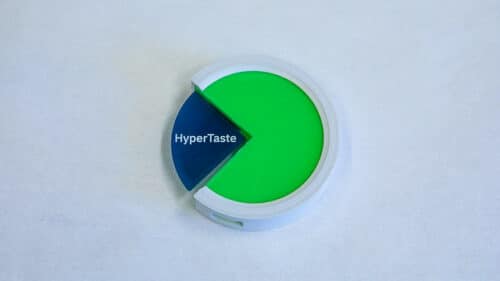Scientists have developed an electronic tongue with AI assistance that can identify the chemical makeup of a drink!

The “tongue,” known as Hypertaste, was developed over the past five years by a multidisciplinary group of IBM Research electrochemists, material scientists, and electrical and software engineers. The scientists were interested in developing a reasonably tiny and affordable device that could detect the complicated chemical compounds present in liquids. The final product reveals a range of characteristic data in about one minute using an array of 16 conductive polymeric sensors.
To use Hypertaste, an operator has to submerge the array of sensors in a liquid. The sensors generate a series of voltage signals in response to the liquid’s compounds, which are referred to as the liquid’s “chemical fingerprint.” These signals are transmitted to the user’s mobile device, where they are compared by a trained machine learning algorithm to a database of chemical compositions. The operator can then examine the liquid’s chemical composition in further detail once a composition that matches is found.

“Like a budding sommelier learning the intricacies of wine tasting, the Hypertaste sensor array needs to be trained to identify the liquids of interest before being put to the test,” IBM said in a blog post. “This is done by measuring the sensor array response in those liquids multiple times and then feeding the resulting data into a machine learning model which extracts the characteristic features associated with each liquid.”
IBM has already employed the electronic tongue to seek for indicators of ocean acidification. The method may also be used to create new flavours and guarantee consistent food and beverage quality during manufacture. One “taste” of a patient’s urine could disclose information about their diet and lifestyle, assisting the medical profession. Hypertaste may even be helpful for determining one’s metabolic fingerprint.







